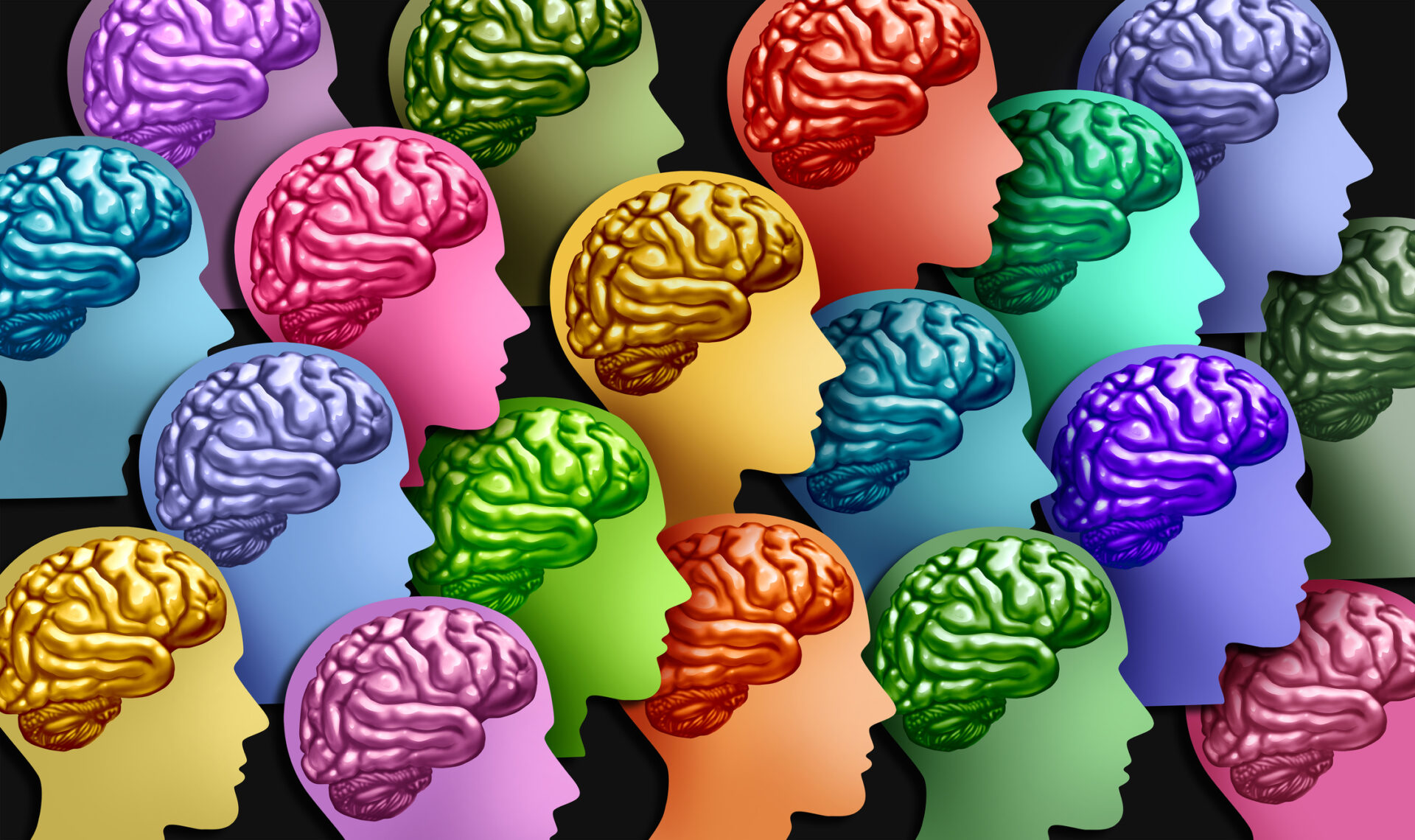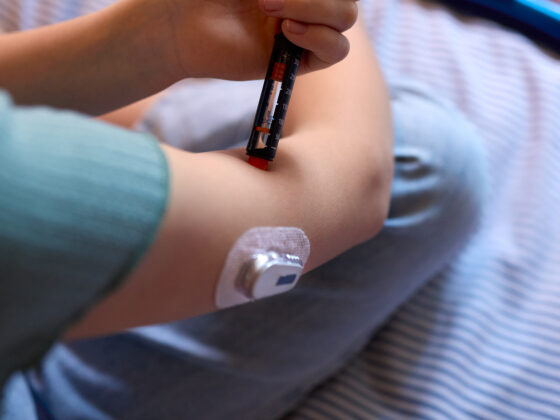The world of movement disorders is broadly diversified and is one of the most common diseases in neurology. The underlying cause is often a disorder of the basal ganglia, but disorders of other areas of the brain such as the cerebellum or spinal cord can also trigger movement disorders. Current study results on ALS, Tourette’s and co. were presented at the congress.
Monosynaptic and directly cortically innervated α-motoneurons are particularly affected by amyotrophic lateral sclerosis (ALS). Muscles that receive the strongest direct corticomotoneuronal innervation should therefore be the most severely affected clinically and morphologically. In order to objectify and record these findings in vivo, whole-body magnetic resonance imaging (MRI) was performed with consecutive analysis of the musculature of patients with ALS compared to healthy controls. An analysis should shed light on the pattern of muscle affection and thus on the underlying central nervous pathophysiology of ALS and contribute to the establishment of modern muscle MR imaging as a biomarker of ALS [1]. An m-Dixon based whole body MR imaging of patients with ALS and age and sex matched healthy controls was performed. At the same time, scales on the patients’ muscle strength were collected. The muscles of the extremities were then marked manually, with nine muscles per patient or healthy control subject being analyzed on the basis of their volume, fat fraction (FF) and functional residual muscle area (fRMA). The statistical analysis of the 978 muscles examined showed a reduced volume, a reduced fRMA and an increased FF in the muscles of patients with ALS compared to healthy controls. The clinically assessed degree of strength of the directly innervated muscles was lower than that of the indirectly innervated muscles in every comparison pair formed. In muscles that receive a markedly strong direct corticomotoneuronal innervation, a stronger morphological involvement was shown in comparison to indirectly innervated muscles. This study was the first to provide evidence of a selective spread pattern of ALS using muscle MR tomography.
Disorders of fine motor skills
Multisystem atrophy (MSA) manifests itself with a hypokinetic-rigid syndrome as well as cerebellar and autonomic dysfunction. Depending on the focus of the disease, a distinction is made between MSA with leading Parkinson’s syndrome (MSA-P) and leading cerebellar deficits (MSA-C). In both subtypes, there is often a disorder of fine motor skills that leads to substantial limitations in everyday life. In a bicenter, retrospective, cross-sectional study, diffusion microstructure imaging (DMI) parameters of 47 patients with MSA-P and 17 MSA-C and 31 healthy controls (HC) were analyzed using region-based techniques [2]. Group comparisons were made using age- and gender-adjusted analysis of covariance (ANCOVA). Partial correlations were used to investigate the relationship between the DMI parameters and the impairment of fine motor skills. The questions were investigated as to whether the cerebral microstructure in MSA-P is characterized by nigrostriatal degeneration and in MSA-C by pontocerebellar degeneration, and whether the fine motor disorder in MSA-P is associated with the nigrostriatal microstructure and in MSA-C with the cerebellar microstructure.
In the group comparisons of DMI parameters, putaminal free interstitial fluid was higher in MSA-P than in MSA-C and HC, and V-CSF was higher in MSA-C than HC. Nigral found more V-CSF in both MSA-P and MSA-C than in HC, although there were no differences between the MSA subtypes. In the MCP, the proportion of axons (V-intra) in the MSA-P was smaller than in the HC but larger than in the MSA-C and also smaller in the MSA-C than in the HC. Uniform in the PCT V-intra was lower for MSA-P than for HC but higher than for MSA-C and also lower for MSA-C than HC. 9HPB was associated with cerebellar but not nigrostriatal microstructure in both subtypes. Microstructural changes in the nigrostriatal and cerebellopontine pathways can be measured in MSA using DMI. As expected, these have a nigrostriatal accentuation in MSA-P and a cerebellopontine accentuation in MSA-C. It is noteworthy that in MSA-P and MSA-C only cerebellopontine, but not nigrostriatal degeneration was associated with the fine motor disorder.
Magnetic stimulation for Tourette’s?
It is known that patients with Gilles de la Tourette syndrome (GTS) have an increased perception-action coupling that correlates with tic frequency. Accompanying EEG measurements showed changes in activity in the left inferior parietal cortex, Brodmann area 40 (BA40). Study results indicate that the BA40 is an attractive stimulation site for non-invasive brain stimulation in GTS patients. The aim of one study was to investigate the effects of 1 Hz repetitive transcranial magnetic stimulation (rTMS) above the BA40 on tic symptoms and perception-action coupling in patients with GTS compared to healthy controls [3]. 29 adult patients with GTS and 29 age- and sex-matched control subjects underwent a detailed clinical assessment and two rTMS measurements at least one week apart in a pseudorandomized order in balanced proportions. To investigate the rTMS effects on tic symptoms, a standardized 10-minute video was recorded before and after each stimulation using the Rush video protocol. There were no group differences in perception-action binding in terms of reaction time or response accuracy. Furthermore, no significant effects on the Rush variables could be demonstrated in patients with GTS.
Symptom progression with PSP
The primary endpoint of clinical studies in progressive supranuclear palsy (PSP) is usually symptom progression as measured by the PSP rating scale (PSP-RS). Radiological or nuclear medicine examinations such as MR volumetry or tau PET often serve as secondary endpoints, whereas core clinical aspects of the disease such as postural instability are usually not recorded using objective measurement methods. The aim of one study was to evaluate posturography as an objective measure of disease progression and to assess the prognosis of PSP [4]. The participants underwent posturographic measurements on an inert recording platform with piezoelectric elements at up to five points in time over the course of a year. The measurements were carried out under two conditions (eyes open [EO], eyes closed [EC]) in an upright standing position with a measurement duration of 30 seconds. The deflection of the body axis in three axes (total sway path, “SWAY”) and the root mean square (“RMS”) were analyzed. The clinical parameters recorded were PSP-RS, UPDRS part III and absolute survival time, if available in the clinical records.
A total of 156 posturographic measurements were carried out on 44 participants, with follow-up examinations after 6 and 12 months available for 34 and 22 patients respectively. Survival data were available for 38 patients. The SWAY, but not the RMS, showed clear progress after 6 and 12 months. For SWAY as a potential endpoint of an interventional study, a sample size of 146 subjects per treatment group could be calculated from this in order to be able to record a 50 % treatment effect. At baseline, the SWAY correlated with the UPDRS Part III, but not with the PSP-RS. In addition, the RMS scores predicted overall survival. Posturography makes it possible to objectively record the progression of stance stability symptoms in PSP (Richardson syndrome). However, relatively large treatment groups would be necessary as an endpoint of interventional studies in order to recognize therapeutic effects, so that the method seems more suitable as a secondary endpoint.
Lipid exchange at a glance
VPS13A is a protein located at membrane contact sites involved in the mass transfer of lipids between the endoplasmic reticulum (ER) and the mitochondria or between lipid droplets and mitochondria, although the regulation of this mechanism is not yet fully understood. Mutations in the corresponding gene cause VPS13A disease/chorea-acanthocytosis, a neurodegenerative disease of young adulthood. Since lipid transfer proteins play an important role in the regulation of lipid homeostasis in the cell, the aim of one study was to investigate the changes in lipid exchange between different organelles [5]. Neurons with VPS13A deficiency differentiated from induced pluripotent stem cells (iPS) derived from patients were used in comparison to cells from healthy donors. In the neurons differentiated from iPS, a different distribution of the investigated lipids was observed, as well as an accumulation of NBD-PE and NBD-PS in mitochondria and the ER in cells with VPS13A deficiency. The results from this cell model suggest changes in the distribution of certain lipid species, with the metabolism of phosphatidylserine and phosphatidylethanolamine playing a relevant role in autophagosome formation.
Congress: DGN 2023
Literature:
- Wimmer N, et al: Morphologic assessment of the selective spread pattern of amyotrophic lateral sclerosis in whole-body muscle MRI. Abstract 182. 96th Congress of the German Neurological Society. November 8-11, 2023.
- Schröter N, et al: Fine motor dysfunction is associated with cerebellar and non-nigrostriatal degeneration in both subtypes of multisystem atrophy. Abstract 197. 96th Congress of the German Neurological Society. November 8-11, 2023.
- Paulus T, et al: No modulation of clinical phenomena and perception-action integration by parietal repetitive transcranial magnetic stimulation in patients with Gilles de la Tourette syndrome. Abstract 308. 96th Congress of the German Neurological Society. November 8-11, 2023.
- Nübling G, et al: The role of posturography in the assessment of disease progression and prognosis in progressive supranuclear palsy. Abstract 213. 96th Congress of the German Neurological Society. November 8-11, 2023.
- Fischer E, et al: Studies on lipid mass transfer in VPS13A disease. Abstract 467. 96th Congress of the German Neurological Society. November 8-11, 2023.
InFo NEUROLOGY & PSYCHIATRY 2024; 22(1): 22-23 (published on 2.2.24, ahead of print)











